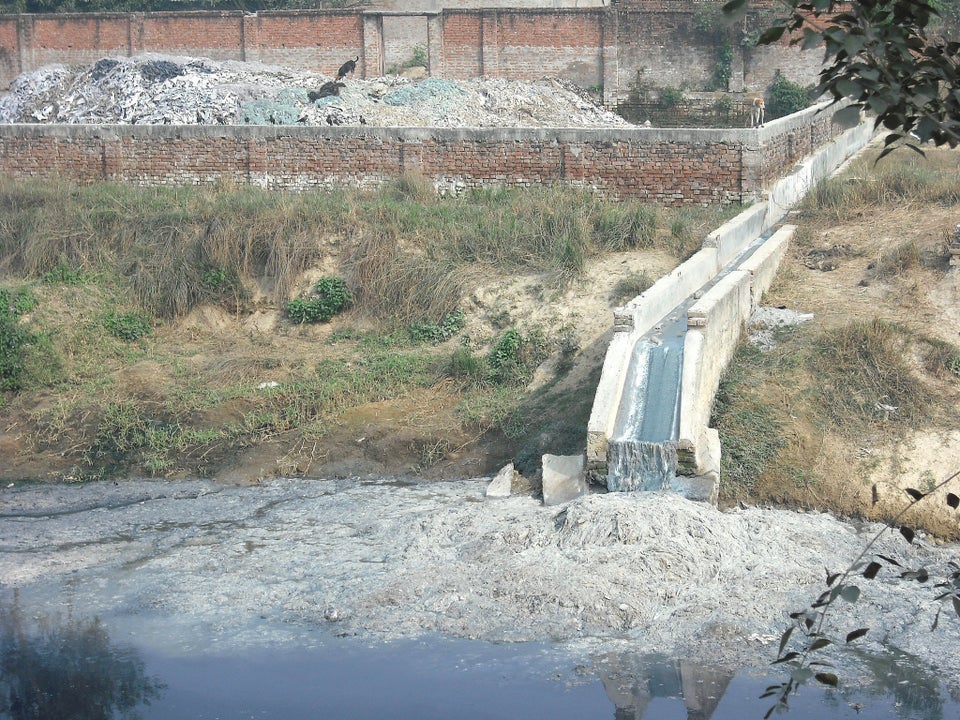
By Christopher Johnston:(click here for original article)
Three of the five Great Lakes—Huron, Superior and Erie—are awash in plastic. But it's not the work of a Christo-like landscape artist covering the waterfront. Rather, small plastic beads, known as micro plastic, are the offenders, according to survey results to be published this summer in Marine Pollution Bulletin. "The highest counts were in the micro plastic category, less than a millimeter in diameter," explained chemist Sherri "Sam" Mason of the State University of New York at Fredonia, who led the Great Lakes plastic pollution survey last July. "Under the scanning electron microscope, many of the particles we found were perfectly spherical plastic balls."
Cosmetics manufacturers use these micro beads, or micro exfoliates, as abrasives in facial and body scrubs. They are too tiny for water treatment plants to filter, so they wash down the drain and into the Great Lakes. The biggest worry: fish such as yellow perch or turtles and seagulls think of them as dinner. If fish or birds eat the inert beads, the material can deprive them of nutrients from real food or get lodged in their stomachs or intestines, blocking digestive systems.
In early April, at the 245th National Meeting & Exposition of the American Chemical Society in New Orleans, chemist Lorena Rios of the University of Wisconsin–Superior, announced that her team found 1,500 to 1.7 million plastic particles per square mile (2.5 square kilometers) in the lakes, with the highest concentration in Lake Erie. Rios is collaborating on the study with Mason and 5 Gyres Institute, a Los Angeles-based research group studying garbage patches in five subtropical gyres in the Atlantic, Pacific and Southern oceans.
Typically, the oceans contain a higher percentage of debris in the one- to five-millimeter-diameter size, whereas, for unknown reasons, the three Great Lakes the team studied have a higher concentration, approximately 85 percent, of micro plastics measuring less than one millimeter in diameter.
Rios did not find any plastic in the fish samples she tested, but they were all from Lake Superior, which has less of a problem because of the way water flows through the lakes. "Lake Superior had a little less plastic than Lake Huron, which was far less than Lake Erie," Rios says. "So, it will be really interesting to see [this summer] if the counts in Lake Ontario [downstream from Erie] are even higher."
The Ohio Department of Natural Resources (ODNR) Fairport Fisheries Research Station has found plastic in yellow perch during their ongoing diet-analysis studies, according to Rios. Although they have not published any data about plastic in the fish guts, they will begin sending fish to her for analysis. "This summer, we're going to look for the presence of plastics in the diet, and if we find any, send it to Dr. Rios to confirm the type of polymers in the plastics," confirms fish biologist Ann Marie Gorman of the Fairport Harbor Fish Research Unit.
Rios's background includes studying plastic debris and persistent organic pollutants (POPs) in the Pacific garbage patch. Her chemical analysis of the Lake Erie samples revealed varying levels of polycyclic aromatic hydrocarbons (PAHs), the product of incomplete combustion usually found near steel mill coking plants or from burning wood or petroleum products. In the mix was also polychlorinated biphenyls (PCBs) and other organochlorides such as the potent and poisonous insecticide DDT. PCBs were used in electric transformers and motors, until Congress banned them from production in 1979 because of their ability to cause cancer in humans.
Rios reports that the bits of plastic, essentially "solid oil," absorb the chemicals like a sponge. The concentration of PAHs in Lake Erie is twice as high as that in the Atlantic because the ocean’s size dilutes the little pellets.
The pollutants can remain in the environment for more than 50 years and can accumulate in fish and other organisms, proceeding up the food chain on ingestion by other species. PAHs can cause DNA damage in organisms that accumulate higher concentrations, which, in turn, can lead to cancer or physiological impairment. PCBs can cause cardiac problems, skeletal deformities and neurological deficiencies. Some of the compounds are classified as endocrine disrupters, meaning they affect hormone levels and systems in plants, animals and even people. "We don't know what's going on yet with the fish or the organisms eating the plastic with these pollutants in the Great Lakes," Rios says. "I plan to study whether the endocrine system of the fish is damaged and whether the problem stops there or moves up the food chain in harmful amounts all the way to humans." She also plans to study what happens to the compounds after the fish die.
The first research of its kind in the Great Lakes was preceded by studies demonstrating that plastic and micro plastics in the oceans has immediate and long-term impact on marine life small and large, including filter-feeders such as clams and mussels. POPs can be passed via mother's eggs, Rios says, impairing the most sensitive life stage of embryos and larval fish when even minor health problems reduce survival rates.
Fish gut analysis by the ODNR has found plastic wrapped around fish intestines. Mason says a fisherman sent her a photo of a fish from Mexico Bay off Lake Ontario that got caught in a plastic ring when it was younger; as the fish grew, the ring constrained its growth as if it were a corset.
During this summer's follow-up studies in lakes Erie, Michigan and Ontario, along with the Saint Lawrence River, Mason and her colleagues will continue to examine the way in which sunlight breaks down the plastics, causing chemicals to escape into the water as well as try to locate more exact sources of plastic pollution. "You can almost never identify what product or where the source of micro plastics is out to sea," explains Marcus Eriksen, executive director of the 5 Gyres Institute. "But in the Great Lakes we can." Because the lakes are a smaller, confined geographic area, he explains, it's easier to determine more accurate waste characterization from samples or identify possible sources of polluted effluent than in the vast, open oceans.
This doesn't mean people should stop washing their faces or bodies. Ericksen and others are pleading the case with the cosmetics manufacturers to replace the plastic micro beads with natural exfoliating materials, such as pumice, oatmeal, apricot or walnut husks, that cosmetics companies like Burt's Bees or St. Ives already employ in their products.
Recently, thanks to 5 Gyres Institute's campaign to convince corporations with partners Plastic Soup Foundation and Plastic Free Seas, the Body Shop and L'Oreal announced that they have discontinued using plastic micro beads in their facial and body cleansers. The groups also worked closely with Johnson & Johnson, which just announced that it will cease using micro beads in all of its products. Unilever announced that it will stop using micro beads by 2015. Once the team's paper is published this summer, Ericksen hopes to reconvene with Proctor & Gamble to convince that corporation to reconsider replacing the micro beads in their products. "We have the evidence that the micro plastics do cause harm," he says. "I am hoping we can translate that research into some positive action."
Follow Scientific American on Twitter @SciAm and @SciamBlogs. Visit ScientificAmerican.com for the latest in science, health and technology news.© 2013 ScientificAmerican.com. All rights reserved.
